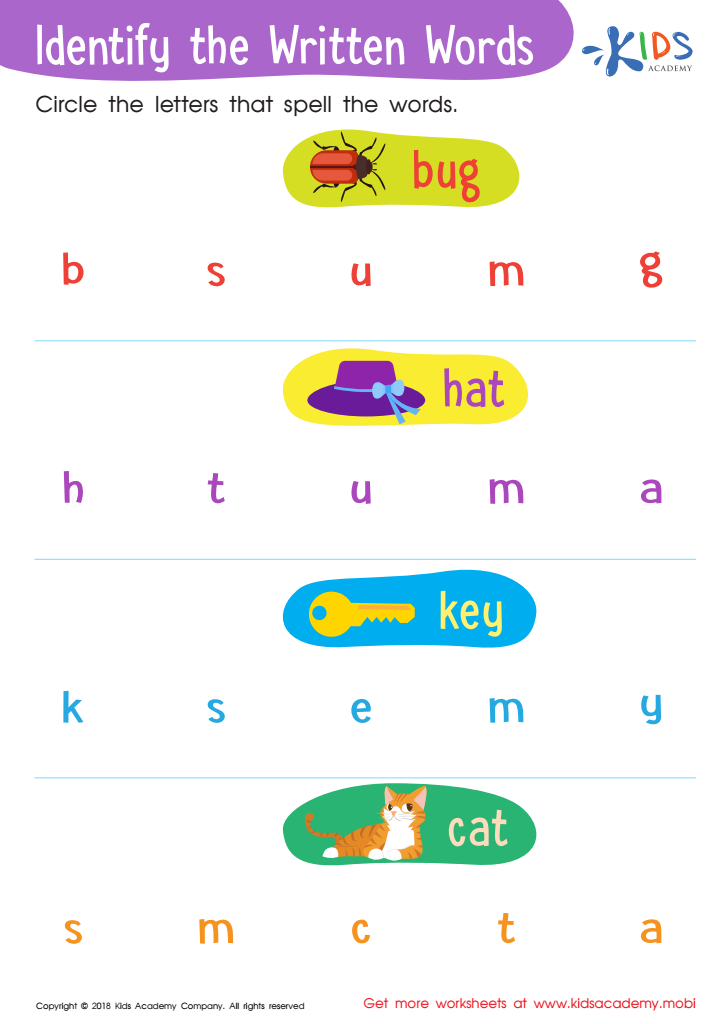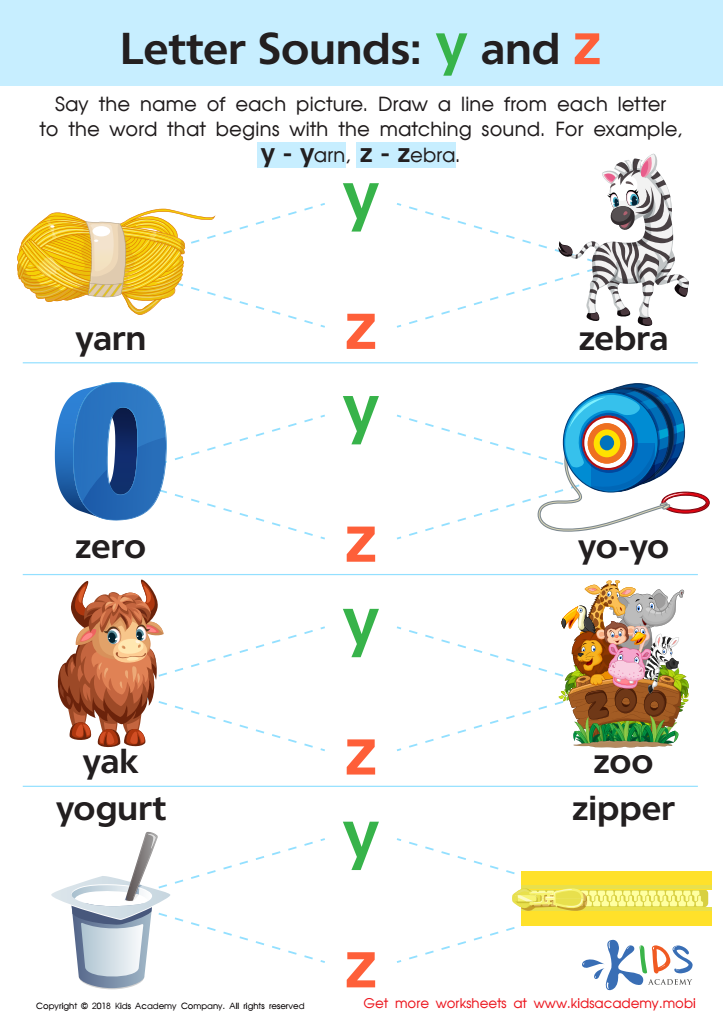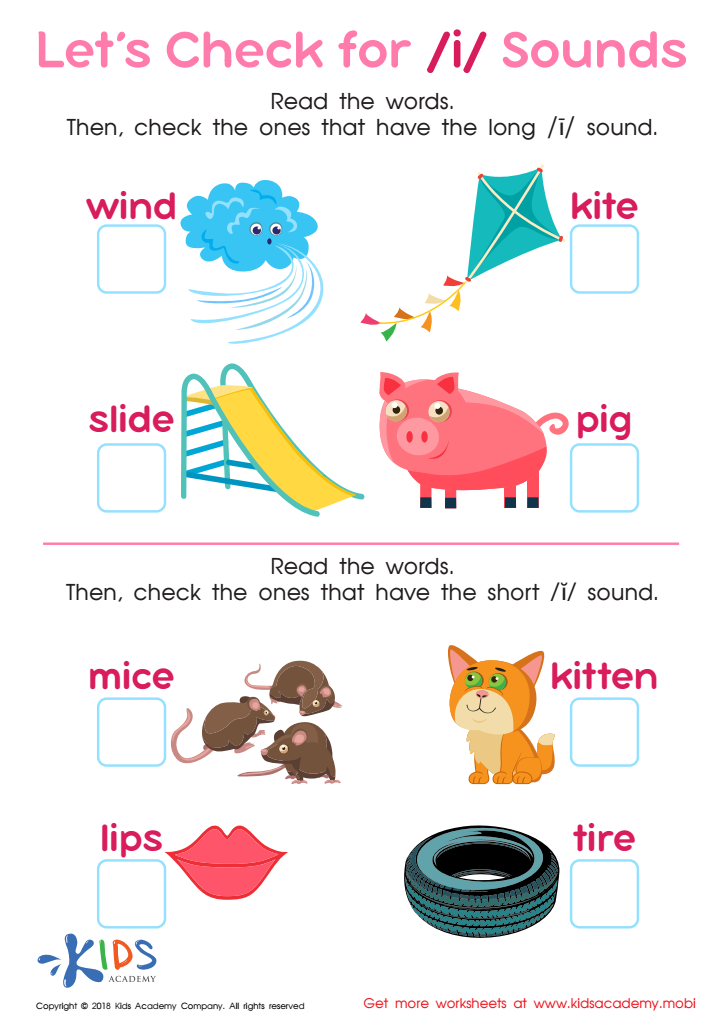Reading skills improvement Normal Letter Sounds Worksheets for Ages 3-6
3 filtered results
-
From - To
Discover our "Reading Skills Improvement Normal Letter Sounds Worksheets for Ages 3-6," designed to make learning phonics fun and effective for young readers. Our expertly crafted worksheets provide engaging activities tailored to help children recognize and practice letter sounds. These resources are perfect for building a solid foundation in early reading, enhancing phonemic awareness, and fostering a love for learning. Suitable for classroom and homeschool settings, each worksheet supports foundational skills needed for future reading success. Empower your child’s literacy journey with our innovative and interactive worksheets that turn learning into an adventure!


Identify the Written Words Worksheet


Letter Y and Z Sounds Worksheet


Let's Check for «i» Sounds Worksheet
Reading skills are a cornerstone of early learning, and normal letter sounds are a critical component in this foundational phase for children ages 3-6. At this stage, young minds are incredibly receptive and agile, making it the optimal period for developing crucial literacy skills.
Parents and teachers should prioritize reading skills improvement, specifically focusing on proper letter sounds, because these sounds are the building blocks of word formation. Correct pronunciation and recognition of letter sounds enhance phonemic awareness, which is essential for decoding words. This basic understanding equips children with the ability to read independently and comprehensively, laying a strong foundation for future academic success.
Moreover, proficient reading skills have far-reaching benefits beyond academics. They contribute broadly to a child's cognitive development, including improved memory, attention span, and critical thinking. Socially, being able to read well builds confidence and communication skills, empowering children to express themselves better and interact more effectively with peers and adults.
Lastly, early intervention in reading can prevent future learning difficulties. By addressing and honing reading skills at a young age, educators and parents can identify and assist children who may be at risk of reading disorders, ensuring that all students have an equitable opportunity to succeed. In summary, investing in reading skills, including normal letter sounds, sets the stage for a lifetime of learning and personal growth.
 Assign to My Students
Assign to My Students













